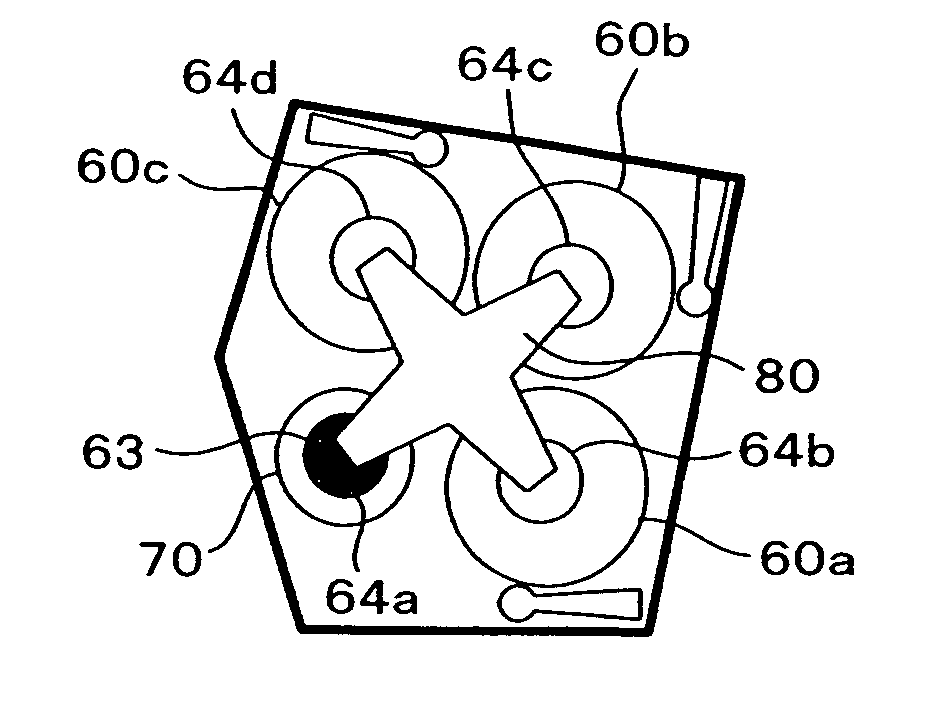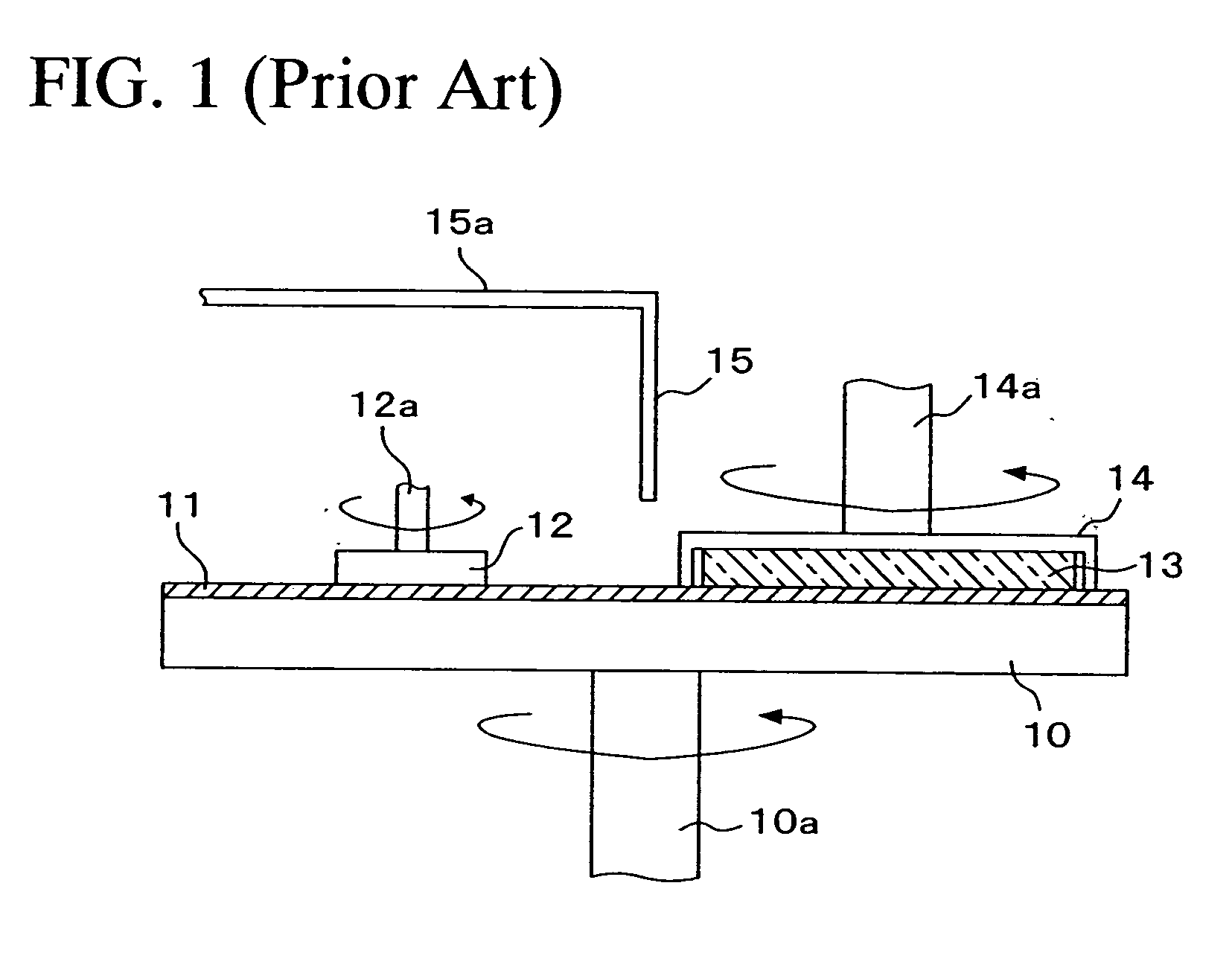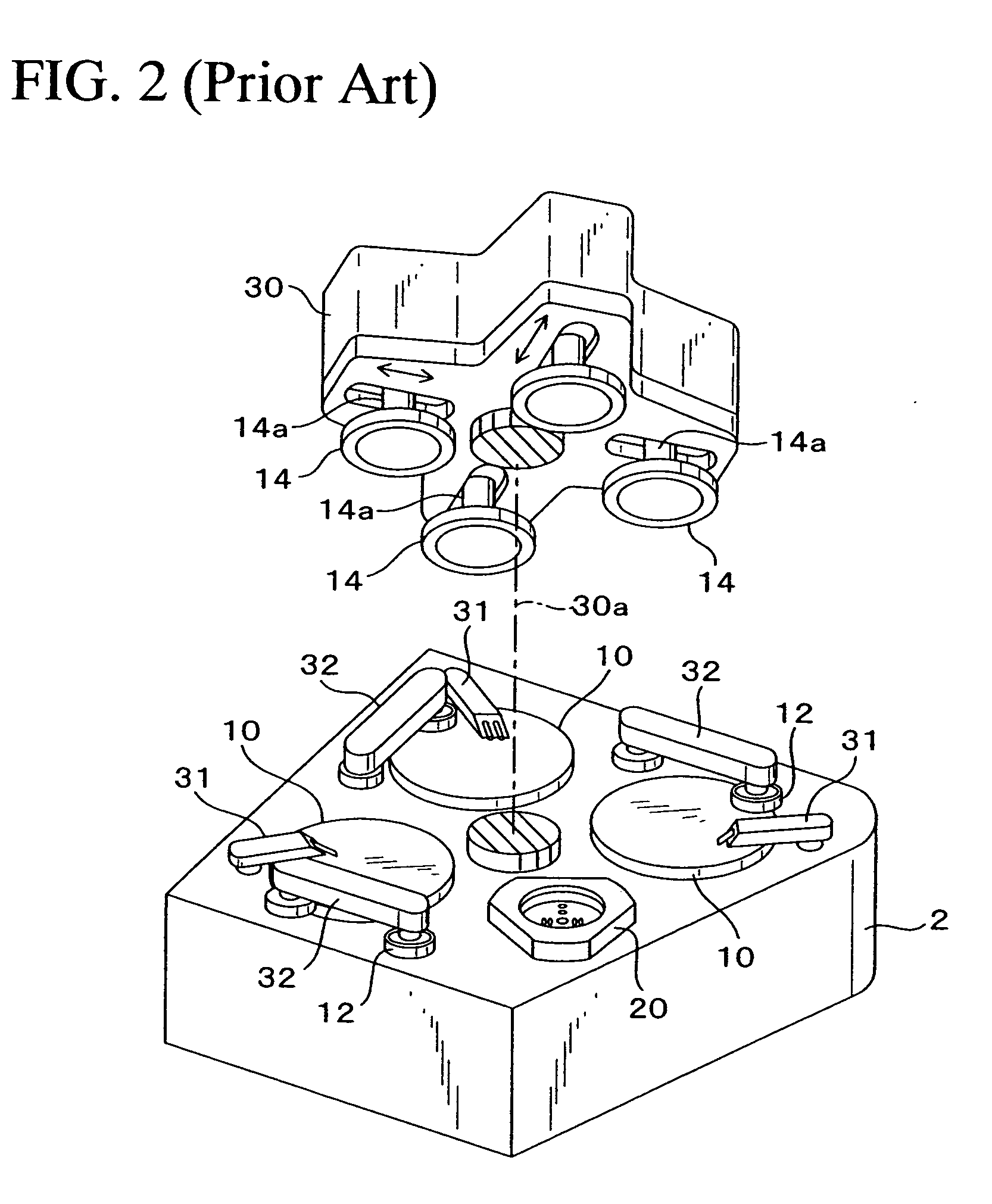Polishing machine, workpiece supporting table pad, polishing method and manufacturing method of semiconductor device
a technology of polishing machine and workpiece, which is applied in the direction of honing machine, grinding drive, manufacturing tools, etc., can solve the problems of oxidation and corrosion easily occurring on the surface, and copper being more likely to be oxidized and corroded. , to achieve the effect of reducing the manufacturing yield
- Summary
- Abstract
- Description
- Claims
- Application Information
AI Technical Summary
Benefits of technology
Problems solved by technology
Method used
Image
Examples
first embodiment
[0123]FIG. 9 is a top view showing a polishing machine (a CMP machine) according to a first embodiment of the present invention.
[0124] The polishing machine according to this embodiment is provided with three platens (polishing stages) 110 and one load cup 120 on the base 102. A slurry supplying arm 131 and a conditioning disc driving arm 132 are provided around each of the platens 110. Slurry supplying nozzles are provided to the end of the slurry supplying arm 131. A conditioning disc is attached to the conditioning disc driving arm 132. An abrasive pad (abrasive cloth) is mounted onto the top of each of the platens 110.
[0125] In addition, four polishing heads 114 are attached to a head unit 130 supported by a rotary shaft while corresponding to the platens 110 and a load cup 120. By means of causing the head unit 130 to rotate while wafers are adsorbed to, and held by, the respective polishing heads 114, the wafers are transferred to the respective platens 110. Incidentally, th...
second embodiment
[0158] Hereinafter, descriptions will be provided for a second embodiment of the present invention. What makes the second embodiment different from the first embodiment is that the pedestal pad arranged on the pedestal in the second embodiment is different from that in the first embodiment. The other basic configuration in the second embodiment is the same as that in the first embodiment is. For this reason, descriptions of parts and components used commonly in the first and second embodiments will be omitted here.
[0159]FIG. 21A is a plan view showing a pedestal pad 210 used in a polishing machine according to the second embodiment of the present invention. FIG. 21B is a plan view showing the vicinity of one of holes 210a in the same pedestal pad 210 in a magnified manner.
[0160] In the case of this embodiment, too, the pedestal pad 210 is formed of a sheet of polyurethane, and at least the surface of the pedestal pad 210 which comes into contact with a wafer is non-absorbable to a...
third embodiment
[0164] Hereinafter, descriptions will be provided for a third embodiment of the present invention. What makes the third embodiment different from the first embodiment is that the pedestal pad arranged on the pedestal in the third embodiment is different from that in the first embodiment. The other basic configuration in the third embodiment is the same as that in the first embodiment is. For this reason, descriptions of parts and components used commonly in the first and third embodiments will be omitted here.
[0165]FIGS. 23A and 23B are plan views respectively showing pedestal pads 221 and 222 used in a polishing machine according to the third embodiment of the present invention. In the case of this embodiments, too, the pedestal pads 221 and 222 are made of a sheet of polyurethane, and the surfaces respectively of the pedestal pads 221 and 222 (the surfaces which come into contact with the respective wafers) are non-absorbable to a fluid. Specifically, the surfaces respectively of...
PUM
| Property | Measurement | Unit |
|---|---|---|
| thickness | aaaaa | aaaaa |
| diameter | aaaaa | aaaaa |
| depth | aaaaa | aaaaa |
Abstract
Description
Claims
Application Information
 Login to View More
Login to View More - R&D
- Intellectual Property
- Life Sciences
- Materials
- Tech Scout
- Unparalleled Data Quality
- Higher Quality Content
- 60% Fewer Hallucinations
Browse by: Latest US Patents, China's latest patents, Technical Efficacy Thesaurus, Application Domain, Technology Topic, Popular Technical Reports.
© 2025 PatSnap. All rights reserved.Legal|Privacy policy|Modern Slavery Act Transparency Statement|Sitemap|About US| Contact US: help@patsnap.com



